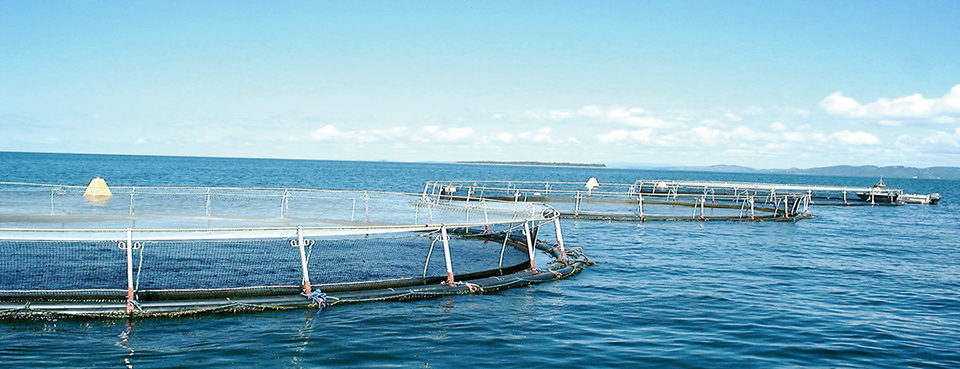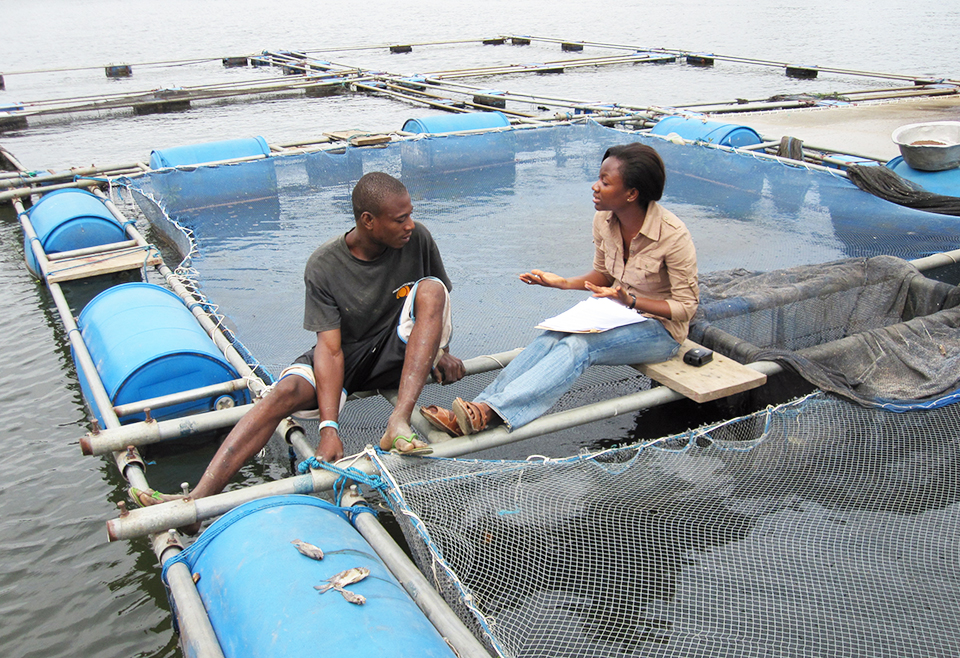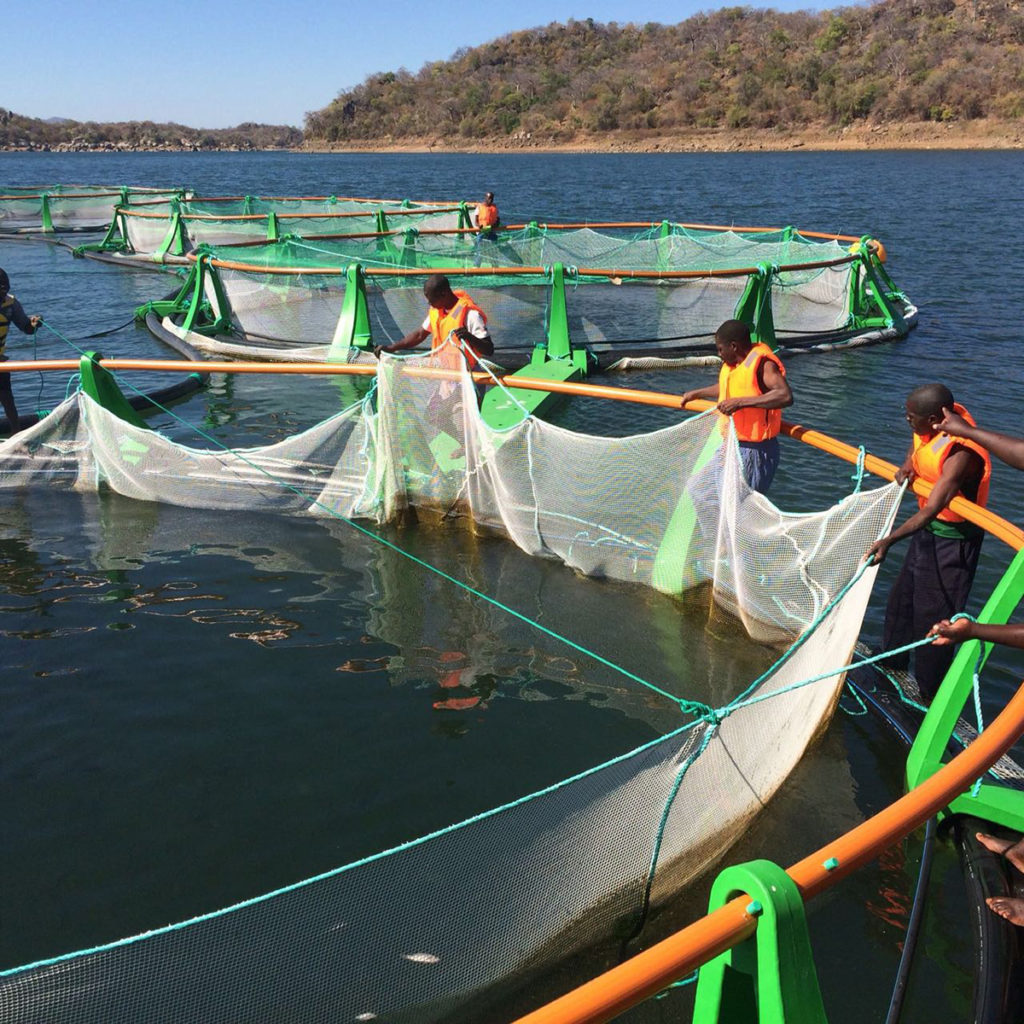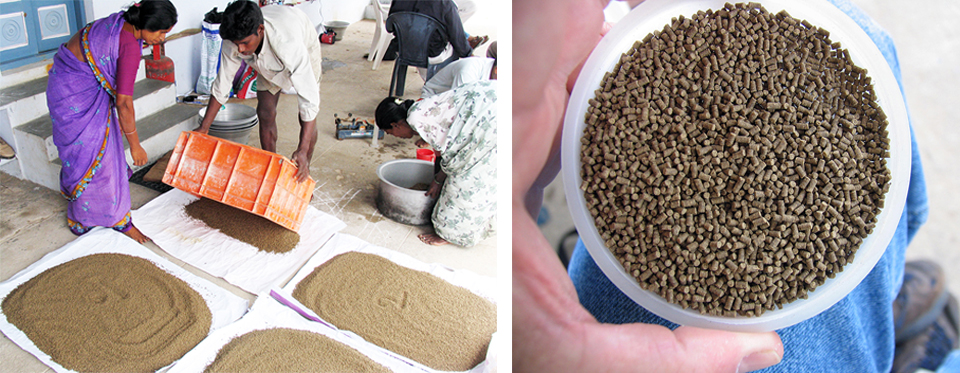One of the world’s largest man-made reservoirs can support various species

Along the border between Zambia and Zimbabwe lies Lake Kariba, one of the world’s largest man-made reservoirs. Lake Kariba is 270 km long and 30 km wide at its widest part, with Victoria Falls near one end and the Kariba Dam, which generates hydroelectric power, at the other. Part of a national park that has no industry and few people, the lake offers high-quality freshwater and an average year-round temperature of 27 degrees-C. These features support the aquaculture of tilapia, cichlids, carp, crocodiles and other species.
Tilapia production
Tilapia was just one of the species introduced to the environs of Lake Kariba about 25 years ago for the purpose of fish farming. Several companies now produce Nile tilapia (Oreochromis niloticus) in the lake.
Lake Harvest Aquaculture, the largest tilapia producer in southern Africa, has tilapia production facilities on the eastern basin of Lake Kariba. The company currently produces around 3,000 metric tons (MT) of whole fish annually and plans to expand to 5,000 MT by 2010.
Its fish are bred and grown to fingerlings near the town of Kariba. Around 3 million fry are produced per month using natural spawning methods, except in the winter months of June and July. The fry grow to 15 g in earthen ponds before transfer to offshore cages moored in the lake. A selective-breeding program is reaping results in terms of improved growth and performance.
Before transfer, all the fish are graded for size. The good performers are transferred, and the slower growers are not. The animals are grown to market size in 1,000-m3 floating production cages designed along the lines of the circular systems used in Europe and elsewhere for salmon and other mariculture cage farming.
Feed, water quality
The extruded feed given to the tilapia is manufactured in Zimbabwe using locally produced ingredients as much as possible. Water quality and fish condition are regularly monitored in relation to growth performance and health. The Lake Harvest facility has not had any significant diseases, but is always on the lookout for problems.
In addition to daily water quality checks, biannual environmental audits assess the impacts of the tilapia operations. The University of Zimbabwe’s Biological Sciences Department is contracted to perform these audits independently. Over the last 10 years, no significant negative impacts have been identified as a result of the operations.
Processing, marketing
The size of fish harvested is determined by the market requirements. Fresh tilapia fillets are transported 370 km by refrigerated truck to Harare and flown to Europe three times a week. Another main market is frozen product for Zimbabwe’s regional markets, including Zambia and South Africa. Lake Harvest International S.A., located in Luxembourg, coordinates the European sales and marketing.
Harvested fish are taken live to Lake Harvest Aquaculture’s modern processing facility in Kariba. The factory was built to meet European Union standards and currently has a processing capacity of up to 15 MT/day, although it was designed to have a further processing line installed when production volumes warrant. It operates to HACCP standards with inspections carried out by E.U. inspectors.
Strict hygiene standards are adhered to, and all employees are trained to a high level. Most of the factory operations, including bleeding, heading, gutting, descaling and filleting, are performed by hand.
(Editor’s Note: This article was originally published in the November/December 2008 print edition of the Global Aquaculture Advocate.)
Now that you've reached the end of the article ...
… please consider supporting GSA’s mission to advance responsible seafood practices through education, advocacy and third-party assurances. The Advocate aims to document the evolution of responsible seafood practices and share the expansive knowledge of our vast network of contributors.
By becoming a Global Seafood Alliance member, you’re ensuring that all of the pre-competitive work we do through member benefits, resources and events can continue. Individual membership costs just $50 a year.
Not a GSA member? Join us.
Author
-
Kumbirai Makunike
Lake Harvest Aquaculture
P.O. Box 322
Kariba, Zimbabwe[109,111,99,46,116,115,101,118,114,97,104,101,107,97,108,64,111,102,110,105]
Tagged With
Related Posts

Health & Welfare
10 paths to low productivity and profitability with tilapia in sub-Saharan Africa
Tilapia culture in sub-Saharan Africa suffers from low productivity and profitability. A comprehensive management approach is needed to address the root causes.

Health & Welfare
A look at tilapia aquaculture in Ghana
Aquaculture in Ghana has overcome its historic fits and starts and is helping to narrow the gap between domestic seafood production and consumption. Production is based on Nile tilapia.

Responsibility
‘Model’ tilapia venture shows mettle in Mozambique
On the shores of Lake Cahora Bassa, Chicoa Fish Farm hopes to create a ripple effect to improve fish supply and quality of life for an impoverished region.

Aquafeeds
A look at India’s fish feed industry
India's fish-farming industry makes limited use of modern feeds, providing potential for the feed sector to grow. Commercial feeds are predominantly used for pangasius farming, followed by a rising popularity in carp culture.


